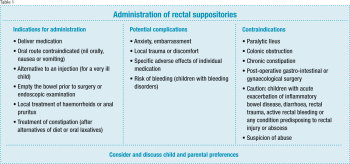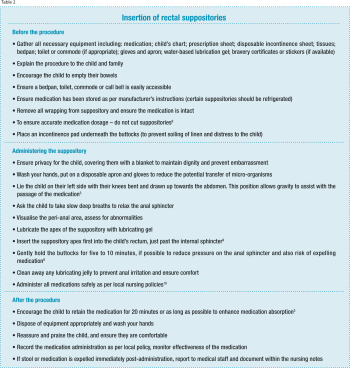CHILD HEALTH
PHARMACY
Administration of rectal suppositories in children
It is important to take steps to limit distress and discomfort during the administering of rectal suppositories in children
June 1, 2012
-
The administration of rectal medication is frequently performed in children’s nursing and is often viewed as a basic skill. However, it may hold potential risks.1 Children may view this procedure as distressing and embarrassing and appropriate knowledge and skills are essential in order to ensure safe and effective care.
Nursing priorities include individual child assessment, medication knowledge, safe medication practices and the promotion of optimum comfort for the child.
Adopting an evidence-based approach to this procedure promotes safe practice while creating a more positive experience for the child. This article presents a structured approach to administering rectal suppositories to children, which aims to minimise distress, and ensure correct administration and optimal efficacy of the medication.
Rectal suppositories
A suppository is a solid bullet-shaped preparation,2 which is inserted into the rectum. It is administered when the oral route is not acceptable or when a local effect on the bowel is required (see Table 1).
 (click to enlarge)
(click to enlarge)

 (click to enlarge)
(click to enlarge)